|
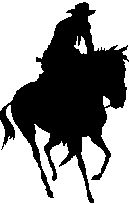
September – November 2011
BACKTRAILS
June 2011
Lessons from True Grit
Tha Ballad of Jack Martin
Ross Morton beginnings
ABC of Branding
March 2011
Trouble with Misfit Lil
Horse Opera Renaissance
Fargo Creator's Pattern
December 2010
Books for Writers
Read by Jake Douglas
The Talking Wire
September 2010
Joshua Dillard
Paperback Blues
Remington Part 3
June 2010
Imagination in the Saddle
Last word on Blurbs
Remington Part 2
March 2010
Jack Martin #2
Justice and the Western
Frederic Remington
December 2009
Ross Morton
Faith and a Fast Gun
Sex and Violence
Gold Robbery Mystery
September 2009
Steve Hayes
BHE Books
Paul Lederer
Accurate words
June 2009
Jack Martin
Series Heroes
Riding the Range
March 2009
Blast to Oblivion
Tyler Hatch and Twins
Night Herding
Walt Masterson
December 2008
All Guns Blazing
Jim Bowden & Co.
Revolver Conversions
September 2008
Western Noir
Power of the Premise
West on Wheels
June 2008
Plot or Not Debate
Jack Giles
Whitney Revolver
March 2008
Walt Masterson
Plotters and Pantsers
More Horse Talk
December 2007
Peace at Any Price
Dan Claymaker
Horse Sense
September 2007
Artist Michael Thomas
Judging by Covers
The Schofield Revolver
June 2007
David Whitehead
Realistic Ballistics
Plot Twists
March 2007
Crime/western fiction
The Walker Colt
Sydney J. Bounds
December 2006
Lauran Paine
Jake Douglas & Co.
September
2006
Misfit Lil
Greg Mitchell
June
2006
Marshall Grover
Facts for Fiction
March 2006
Jeff Sadler
Mike Stotter
Writers and Money
|
BLACK
HORSE EXTRA
Real Cowboys and Reel Cowboys Hoofprints
The Rights and Wrongs of Ebooks
Serenade for Miss Goodnight
New Black Horse Westerns Chap O'Keefe Ebooks
The Black Horse Western line originated in 1986 when UK
publisher Robert Hale Ltd introduced new, uniform branding of all its
western fiction, which it had been producing for years as hardback
books primarily for sale to public libraries. This year the series
has its 25th anniversary. Congratulations on the BHW Silver Jubilee
are in order from grateful western readers and writers everywhere.
BHWs pass the milestone with no fanfare, their appearance consistent as ever. The books' attractive look remains
almost unchanged in times that have changed and continue to change.
It takes close examination to distinguish between an early and late
BHW. Clouds may have gathered over the future of "light fiction" in
public libraries funded from the taxpayer's purse, but the company
continues to publish eight new western titles a month, although for a spell they did issue as many as ten.
Splitting the month's potential market for new hardcover westerns eight
ways, and the benefits of modern printing which allow
short print-runs, have enabled the BHW enterprise to stay
afloat while other publishers have long abandoned the genre.
Probably because of the continual output of new titles, BHW writers cannot expect to receive royalty payments;
just a very modest advance, on acceptance, which has not been
increased. The threshold at which royalties would cut in is, in
fact, higher than the ceiling of the print-run. Reprints are seldom
ordered. Shortfalls due to demand for a particular book can be met by
substitution of another in the series which to a purchasing librarian might look just as exciting.
Large-print editions from Ulverscroft Foundation publishers often
follow, and half the payment for Hale's sale of these rights goes to
the author, which is a considerable help.
Hale's writers range from veteran professionals, hoping to keep alive
a last surviving UK market for westerns, to newcomer hobbyists realizing
cherished dreams to become published writers. Identities are concealed
virtually as a matter of publishing policy. Four or more pen-names are
not uncommon for the busiest contributors while Lauran Paine, the US pulp
writer of posthumous Open
Range fame, owed much to the British company for his
tally of around seventy!
The company has long maintained its BHWs are sold and read "by imprint".
This could be about to face a new test. In January, Hale entered the
burgeoning ebooks market with The Black Horse
Westerns Collection No. 1, a bundle of four books by
four quite different authors.
The bundle was probably better suited for new
readers than regular readers with established
preferences. As some predicted, it was not an immediate
success as a sampler. In July, sales rankings at Amazon.com
indicated the collection's appeal was three times less than that of the best
performing ebook by one of the several BHW authors handling his ebook
releases independently. Also, of the independent author's other
available ebooks, the worst performing had a sales ranking half as
high again as the Hale collection's.
Moreover, success for a sampler can be measured best by its ability
to sell further product. With no other BHW ebooks by the four bundle
authors available, this function was never going to be fulfilled.
In October, Hale will be trying afresh to gain a foothold in the new
market. The titles of five ebooks – all but one believed to be
from writers with single BHWs to their names – are in the
New Black Horse Westerns section of this issue of the Extra.
The
Extra has no information about any of the writers other than Arthur Kent,
whose story was told in its Hoofprints sections of December 2009 and March
2010. Arthur, a newspaper writer and editor, was born in 1925 and had his
first novel published in 1953.
The selected novels
were first published or reprinted as BHW print books in 2009. Cover images
of the five, and of many other ebooks, are included alongside our in-depth
report of an absorbing "campfire pow-wow" in which three BHW writers
debate the challenging new world of the ebook and the promise it might
hold for the western genre.
For those not ready to handle the ebook issue, which is the literary dynamite of the day,
we have the ever-reliable Paddy Gallagher, aka Greg Mitchell, to
open proceedings with comparisons between the movie cowboys and the
genuine article.
A reader commenting via our feedback address on Paddy's
article last time said, "Greg Mitchell's piece on branding was insightful
and useful, as always." It was a typical reaction we have seen many times and we wonder how long it will be before a book
publisher makes an offer to issue a handy and attractively designed volume of Paddy's
instructive BHE articles.
Your comments and western news are always welcome at feedback@blackhorsewesterns.com
|

Be reading this western ebook in UNDER A MINUTE!

Be reading this
western ebook in
UNDER A MINUTE!

Click here for details
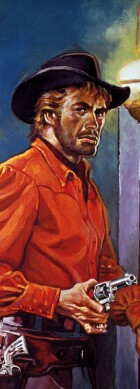
|


Wyatt Earp

Modern "mile-high" Stetson.
|
Greg Mitchell lists some differences
REAL COWBOYS AND REEL COWBOYS
Jim and Barney were hot on the trail of a thief when they arrived at
White Rock. Soon they found themselves drawn into the mysterious
community, which was claimed by white goldseekers and restless tribes
alike.
Then a dying renegade told them the story of Crooked Foot's
gold and the pair found themselves being hunted down without knowing
why. They had to venture into dangerous territory seeking answers.
And who knew what perils awaited them?
– Back cover
Crooked Foot's Gold
NOBODY is alive today who saw first-hand what the typical cowboy of
the Wild West era looked like. Some photos exist, but for most of us
our image of the cowboy is derived from what the film studios decide
to present, and these images seem to change with every generation.
This is understandable when we consider that the movie is more than
a century old, and ongoing, while the Wild West era lasted about 40
years at most.
When cowboys were first portrayed on the silver screen their images
were probably more authentic than those created fifty years later,
because the first western cowboy actors were influenced strongly by
old frontiersmen who were still living at the time. Charles Siringo,
the range detective, and Wyatt Earp and Bill Tighlman gave technical
advice to early western actors such as William S. Hart and others.
Old-time outlaws like Emmet Dalton and Al Jennings also advised for
some movies.
The cowboys in those old films bore little resemblance to the 21st
century western hero. Many wore high-crowned hats and woolly chaps
and had leather cuffs on their wrists. Today these items have all
but disappeared from the scene.
The cuffs were popular in brush country and were often used to
deflect branches while chasing cattle through the timber. They would
serve little purpose on the open plains. As ranch sizes shrunk with
fencing, most of the brush disappeared and the cattle became
quieter. By the mid-20th century, few cowboys had any need for
cuffs.
The high-crowned hats are still seen occasionally. They were said to
be cooler in the hot parts of the country because of the extra air
space between head and hat. Judging by old photos, these came in at
the end of the Wild West era although they were popular in Mexico
before then. The hat with the lower crown and curled brim would have
been more in favour with cowboys working in brush country. When
riding hard a straight-brimmed hat can blow in a rider's eyes and
for a man dodging low branches that can spell disaster. A rolled
brim will blow up but won't blow down, making it a much safer
proposition for fast work in timber.
Many old cowboys could afford only cheap wool-felt hats which
quickly became floppy. As a compromise, some of these were pinned up
in front to keep them from hindering the rider during fast work.
Frederic Remington often painted hats of this type on his subjects.
Some of these are now appearing in more recent movies and TV series
like Lonesome Dove.
Cowhands in the northern states generally wore hats with slightly
lower crowns and smaller brims. Some had the pinched crowns made
famous by the Canadian Mounties.
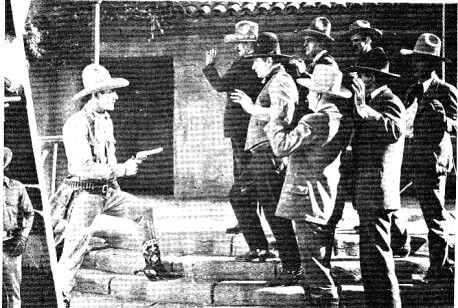
Cowboy hero Tom Tyler rounds up the villains in an early "talkie" serial, The Phantom of the West (1930).
|

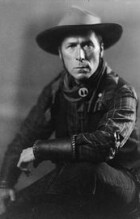
William S. Hart
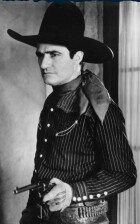
Tom Mix
|

Modern rodeo rider in Cheyenne chaps.
|
Gun belts changed noticeably from the mid-20th century. The old
cowboy used a holster that sat high and completely encircled the
belt but those appearing in the films often had the holster
suspended from a loop on the bottom of the belt. Tied-down holsters
started appearing in 1930s movies and by the '50s and '60s were
almost uniform with film gunfighters. But they are a modern
innovation and I have yet to see a photo of an old cowboy or Texas
Ranger wearing them. The main reason was that most guns were too
high on the hip; also, the tie-down thongs would be difficult with
chaps. The holster was a convenient way to keep a gun handy, but
quick draws were not high on a working cowboy's list of priorities.
Although popular for a time, it was hard to take the over-dressed
film dudes of the 1930s and 1940s as authentic cowboys. Some were
great entertainers, but Tom Mix, Gene Autry, and Roy Rogers bore no
resemblance to working cowboys. Even my old favourite, Hopalong
Cassidy, looked more like a fashion plate for the western clothing
industry, but at least he didn't sing.
Most working cowboys wore leather leg protectors called "chaps" or
in some areas " leggings". They protected the legs and pants from
brush and cactus and some bronc busters felt that they gave a better
grip on the saddle. Chaps are still seen in movies but they are
mostly the batwing type. These fasten around the legs with snaps and
rings which make them easy to put on or remove when a rider is
wearing boots and spurs. The California style had five fastenings,
the Texas style four fastenings, and the Cheyenne style three
fastenings on each leg. Modern rodeo riders use Cheyenne chaps as
they flap about more and tend to exaggerate the spurring action that
wins the rider points.
|
 Gene Autry
Gene Autry
|
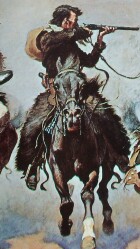
A Remington cowboy in woolly chaps.
|
Shorter versions of chaps ending just below the knee were called
"chinks" and were said to be most popular in California and Nevada.
They did not give quite as much protection but were cooler and made
a convenient apron for a man shoeing horses. Shotgun chaps were a
pair of leather tubes that were pulled on like trousers. These can
usually be identified by fringes down the outside seam. Some modern
versions have zippers running the length of the seam. The old
cowhands liked them because they were lighter than the batwing
types. Some of these are still seen today in western riding events
and appear in the odd movie.
While on the subject of weight, many authors write of men wearing
"chaps of heavy bull hide". As one who has had the dubious pleasure
of skinning a bull I can vouch for the fact that such chaps would be
too heavy to wear. A bull's hide is nearly half an inch (12.5mm)
thick and I have seen it turn a .22 bullet. Heavy hides are split
into layers during leather preparation. The outer layer can then be
dressed to a good shiny finish. The inner layers or "splits" are
softer and are often made into chaps.
Some chaps were made of light animal hides with the hair still on
them. Some were batwing and some were shotgun types. King Fisher,
the notorious Texas gunfighter was reputed to have killed a tiger
belonging to a travelling circus and had chaps made from its hide.
Another version of the story is that Ben Thompson, an equally
notorious character, shot the tiger and had the chaps made for
Fisher.
Woolly chaps were usually shotgun types with heavy fur on the fronts
and sides. Bear skin was often used as were the long-haired hides of
Angora goats. These chaps gave good protection in spiky brush, were
almost waterproof, and were warm in winter. Bronc busters liked them
because they could reduce the impact of a kick and gave some
protection if a bucking bronc was to throw itself against the corral
rails. I cannot recall seeing a modern photo or a movie that showed
these chaps in use, so it is pretty safe to say that they are no
longer made.
Rodeo pickup men these days wear heavy padded versions of batwing
chaps that extend below the foot and stirrup. These men must ride in
to pick riders from horses that are bucking madly with heels flying
in all directions. Even if the rider has been thrown, the horse must
still be caught and unsaddled. The padded chaps would not be popular
with working cowboys and would be unsuitable to wear dismounted but
are a modern, stylized variation of an old idea.

Regardless of the
style, most modern chaps have a belt at the back, but these days the
strap that joins both legs in front is narrow and will break easily
if it gets caught on a saddle horn during a rough ride. In theory it
should not if the rider is sitting properly but in practice riders
can be thrown out of position and straps can become caught.
|

Shotgun chaps in a Frederic Remington painting.
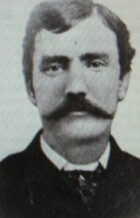
King Fisher
|
 Remington bronze sculpture shows how the high-heeled boot grips the stirrup when things go wrong.
Remington bronze sculpture shows how the high-heeled boot grips the stirrup when things go wrong.
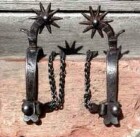 California spurs
California spurs
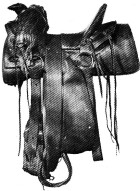 Denver saddle 1875
Denver saddle 1875
|
Cowboys were very fussy about their boots, preferring those with
heels higher than would be suitable for serious walking. The Cuban
heel favoured for cowboy boots was not, however, a cowboy invention.
These heels were used by some European horsemen around the time the
Spaniards brought horses to North America. During the Wild West era
cavalrymen in various countries and some mounted police also had
Cuban heels on their boots.
Fanciful stories are told that cowboys
needed to dig their heels in the dirt while roping horses on foot
but the high heel is a safety measure for riders. Pleasure riders in
controlled circumstances keep the tread of the stirrup under the
ball of the foot, but working riders in dangerous situations push
the foot into the stirrup up to the heel, knowing that it will not
be trapped. The high heel holds the stirrup in place during times
when the rider may be slightly off balance and the stirrup is
floating loose on the boot, but the foot will slip out easily if the
rider somehow comes to grief.
Some bronc busters used plain iron rings instead of the conventional
ox-bow stirrups. These stuck to the foot better and were less likely
to break it if the horse fell on the rider. I knew a few riders who
had a slightly crooked foot after having it broken by the stirrup
when a horse fell.
Texans were said to prefer longer boots than cowboys further north.
Some say this was because snakes were more prevalent, others blame
the height of the cactus. Photographic evidence indicates the story
is right. The fancy stitching on the legs of some cowboy boots is
not entirely decorative. It gives a bit more rigidity to the boot to
prevent the leg being excessively wrinkled.
The old cowboy's spurs were a mark of his trade. They were large and
noisy in comparison to military or English-style spurs. But it is
not the size of the spur but rather the sharpness of the teeth of
the rowels and the distance between those teeth that controls their
severity. A good rider touches lightly with the spurs. Even the
mildest spur will cause injury if used with too much vigour.
The
jingling of the spurs also served a purpose. It reminded cunning
horses that the rider had spurs and sometimes a mere shake of the
foot had the same effect as actually applying the spur. The jingling
spur of the cowboy on night watch told the cattle that a man was
approaching and they were less likely to take fright and stampede.
Not all horses needed spurs but cowboys changed mounts frequently
and it was best to have the persuaders handy. Good riders used them
only when necessary. They were worn low on the heels and many
dragged on the ground when their owners walked. They were very noisy
on board flooring.
The bandanna around the neck was not the sole domain of the cowboy
and was worn by many 19th century outdoor workers and sailors. A
large percentage of shirts in those days were collarless and the
bandanna gave some protection from the sun, specially if the person
had a narrow-brimmed hat or was wearing a cap. Cowboys also pulled
their bandannas over noses and mouths when operating in heavy dust.
This was a sensible precaution when working any length of time
around large numbers of moving cattle. It does not take long for the
dust almost to clog a rider's nostrils. When the work is done, it
can take a considerable time to clear the nose of mud that has
formed in there.
Cowboys frequently wore gloves, sometimes as a protection against
the cold. In hot weather they prevented rope burns. A rope
that has been dragged in the dirt a time or two can really take the
skin off a bare hand when a cow or a horse is on the other end
of it. But I doubt that the old movie cliché of the gunman putting
on gloves before a gunfight actually happened. The gloves would only
make fast gun-handling more difficult.
I wonder, too, about the black-clad gunfighter so often portrayed in
movies. For a man on horseback, black is a most impractical colour
as it shows every speck of dust and is also hot. Around towns men
did wear black on formal occasions and many old town-based lawmen
dressed conservatively and could never be mistaken for cowboys. A
black boot shows the dirt more than a brown one will. Black clothing
stands out because there is very little in nature that colour. I
recall reading of a dismounted cavalryman trying to conceal himself
from Indians. His black boots attracted the attention of warriors a
considerable distance away. He was forced to abandon them and creep
away in his socks. The investigating Indians must have wondered how
a pair of cavalry boots came to be lying abandoned in the bushes.
Fortunately, they made no search for their owner.
Westerns made in the 1950s could be easily identified by the saddles
on the horses. The old cowboy's saddle had a high, almost upright
cantle but about 50 years ago saddles with extremely low cantles
became popular. Suddenly our heroes were on saddles that sloped
back from the horn to an almost flat seat. Some claimed that these
were made for professional calf-ropers because they were easier to
dismount from in timed competition, but one old cowboy had other
ideas. He wrote that there were few working riders left and the low
cantles were so that overweight weekend riders could get in and out
of them more easily. Sense has prevailed again and saddle design is
better now. You don't need to be a horseman to see the difference in
the saddles. So when you see those low cantles in a horse opera,
they are a good indication of the film's age.
It's heartening to see modern film makers paying more attention to
detail. The few cowboys we see on the screen today have more realism
about them than most of the stars of 50 or more years ago. I am
optimistic enough to think that well-made western movies will endure
as long as movies exist, but they will need to be quality
productions. With any luck, the over-dressed singing cowboys are
gone, and imagination, reality and good stories will combine to
preserve the popularity of the western genre whether on film or in
books.
– Paddy Gallagher, aka Greg Mitchell, whose latest westerns are
Murdering Wells (Thorpe) and Crooked Foot's Gold (Hale)
|
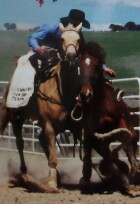
Collision ... an example of why padded chaps are useful in rodeo.



Dallas Stoudenmire as town marshal of El Paso ... different to old Hollywood ideas of a Western marshal.
|
|
|
|

Careers man Colin.
|
Making a mark on the western scene
HOOFPRINTS
Many moons ago, John Hale, chairman and then managing director of publisher Robert Hale Ltd, faxed an
author seeking better terms for BHWs to say that writing westerns was "no
decent way to make a living for a professional writer". It's probably advice
that would be backed up by two of Hale's current lineup of authors, Colin Bainbridge and Carl Bernard (aka Abe Dancer and Caleb Rand).
Both are former careers advisers in England who write their novels
for Hale as a retirement hobby. The Northampton Chronicle & Echo reported
that Colin (63), who is married with four children and five grandchildren,
had his first BHW, Pack Rat, published last October. He said,
"The reason I chose westerns is that I do a lot of reading as a bit of light
relief and amongst other things I had read westerns, especially Black Horse
Westerns, and I thought I could try my hand at one of them." Before Carl
Bernard took early retirement from higher education to become a BHW writer,
he was a senior lecturer on graphic arts and photography. He has also been
a course consultant at the London School of Fashion, and has written numerous
research and evaluation documents for degree and postgraduate study courses.

|
|
|
The writers' group Western Fictioneers has published its first
anthology, The Traditional West. It contains 24 brand-new stories,
or more than 120,000 words, and is available as an ebook or a trade
paperback. Its creators say it's the biggest all-original western
anthology ever published. Western Fictioneers' membership is
international and BHW authors with stories in its anthology's pages are Ross
Morton ( Silence), Matthew P. Mayo ( Catch as Catch Can) and Clay More
( Boot Hill Neighbors). The book's cover illustration is by Pete Peterson,
an award-winning artist, the great-grandson of a Confederate veteran and
descended from Cherokees who trudged the Trail of Tears. He is a devotee
and student of frontier history and fiction, and a lover of Western art.
|
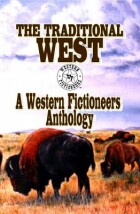
BHW authors' stories.
|

Tales from old pro.
|
Ralph Hayes
has been an established byline on mass-market paperbacks since the 1970s.
His books were published in the United States by second-tier companies like
Tower, Nordon, Leisure, Pinnacle, Belmont and Manor Books, and distributed
in the United Kingdom and elsewhere by well-known budget-paperback lines:
Flamingo, Centurion and Trojan. His fiction was not limited to westerns.
Other genres he covered included action-adventure, the spy thriller, historical
fiction, and romance. Hayes was also one of the authors who wrote Nick Carter
yarns under that house pseudonym when it was in use by Award Books. Nick
Carter was a famous American fictional character who, rather like Sexton Blake
in Britain, began life as a pulp fiction private detective late in the nineteenth
century and was popular in a variety of formats for most of the twentieth.
Hayes more often wrote series of his own. One of these featured former Green
Beret The Hunter ("The Hunter tracks down and kills the human animals beyond the reach of the law") and another was about Buffalo Hunter O'Brien ("He looked dirty, dog tired, and dangerous; his chestnut mare was as sorry-looking as he was"). In October an O'Brien story, Fort Revenge,
will be published as a BHW. Its cover is shown in our New Black Horse Westerns
section below. The Hayes name has appeared before on a BHW, in February 2010
with The Tombstone Vendetta.
|
|
|
The
London Daily Mail suggested that Kindle customers missing the feel of a "real"
book might like to get their thumbs into the flipback, an innovation from
the Netherlands. It's a revolutionary new, miniature printed book that has
been launched in the UK by Hodder, which is now owned by the French company
Hachette. Flipback text runs parallel to the spine and readers will
have to go against their natural urge to turn pages to the left and, instead,
move the pages upwards. Hence the name flipback. The books are printed on
the wafer-thin paper traditionally used when printing dictionaries and Bibles.
They are the size of an old cassette tape but thicker to accommodate numerous
pages. Some publishers are hoping the flipback will bring a publishing revolution
and a battle with ebooks, by reverting to the paperback publishing
model and playing on readers' nostalgia. Hodder said, "The release is the
most radical amendment to paperback printing since Penguin first brought
the paperback to the mass-market in 1935." Let Hoofprints know when you see
your first flipback western!

|

Books take new turn. |
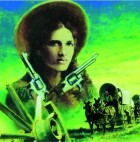
Her back to the wall.
|
Fancy having Miss Lilian Goodnight, alias Misfit Lil, hanging around your place? BHW, Linford and Magna Dales cover artist Michael Thomas
has launched a new project. He is offering his artwork in the form of posters.
He tells the Extra, "Just out of interest I've opened a new online Zazzle
store devoted to digital reworkings of some of my past covers. They have
a '50s/'60s pop art feel and are stronger and more defined than the originals."
Zazzle prints are made with premium, UV-resistant archival ink, and are available
on seven different media, from basic poster paper to canvas. You can add
extra oomph to your prints with custom-fitted frames and matting that will
add style to any wall. The Misfit Lil poster features the strikingly coloured
cover art from this year's Linford Western Library edition of the much-applauded novel Misfit Lil Cheats the Hangrope. It's being marketed under the title "Cowgirl Outlaw Misfit Lil Pop Art Poster". You can find it here.
|
|
|
TV network AMC told the New York Daily News it had
been looking for a western when writers Tony and Joe Gayton had made it known
they were hankering to try one, while actor Anson Mount had said he was
thinking maybe he should shake up his career by doing a western. On
November 6, AMC will premiere the results: Hell on Wheels, written by the Gaytons and
starring Mount. The drama
is reported to be dense and sometimes dark. Its nasty characters show
occasional
flashes of light and its heroes have flaws. It has considerable action,
profanity and
graphic violence. A new Deadwood? The series, as reported in our
September 2010 Hoofprints, is set in post-Civil War America, across the
lands where the transcontinental railroad is being built. Mount plays
Cullen Bohannon who fought for the South, although he had freed his own
slaves a year
before the war broke out, at the urging of his Mormon wife. Colm Meaney
plays "Doc" Durant, the ruthless entrepreneur building the railroad. His
pitch is that it will make America great. His real motive is that it
will make him rich.

|
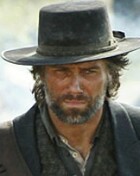
Dense and dark.
|
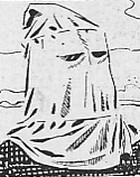
Hidden identity.
|
Many a BHW writer has delighted in finding odd facts in odd corners to
add authenticity to a story. Back in 1994, when writing an early novel
about Joshua Dillard, ex-Pinkerton detective and hard-luck hero, Chap
O'Keefe was reminded about skeps and escape ropes by the Western Scrapbook
pages of Cowboy Picture Library comics published in the 1950s. Conical
skeps, made of woven straw, were intended as hives for bees, but
wild-bee hunters slit eyeholes in them and used them as hoods while
raiding the nests of the insects not only for the precious honey but
for the wax, which was widely used in the manufacture of candles. An
essential part of the travelling salesman's kit in the Old West was a
knotted rope "which he wore at all times coiled round his waist. This
was to effect an easy escape from the upper bedrooms of western hotels,
which were notorious for their habit of catching fire." To see how these
two colourful elements were worked into Chap's intriguing plot, download a copy of
the new, low-priced Kindle ebook edition of The Sandhills Shootings here.

|
|
|
BHW writer Gary Dobbs (aka Jack Martin) has delighted western
followers with another Wild West Monday at his blog, the Tainted
Archive. This time it was an "eMonday" with a slant toward ebooks
during a three-day run-up to the event. Gary listed a "Magnificent
Seven" ebooks, including the Hale Black Horse Westerns Collection No. 1
and one other novel previously published as a BHW hardcover. If you
own an ereader and haven't seen the recommendations, dive back into
the Archive's archives for the last weekend in July today! Among many standout features were
Gun Justice, a Cash Laramie story from Edward A. Grainger and Chuck
Tyrell, an interview with Terry James, a short history of British
western comics, including a complete picture story from 1967, and
pages from a seldom-seen 1959 "graphic novel" based on Louis
L'Amour's highly regarded To Tame a Land.
|
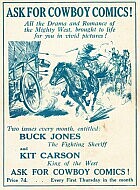
From past to present.
|

Song of the West.
|
Amanda Ferguson has listed "The Most Famous Western Movie Songs" at
Screen Junkies. She said, "The best western movie songs are famous for
their catchy lyrics and their ability to sum up life in the West." At
Number 1 was High Noon by Tex Ritter, the theme song for the movie
starring Gary Cooper and Grace Kelly. "This song epitomizes the western
film genre. It has high step sounds and a whipping beat that is high
flying. Its context is soulful and its guitar is picked with only the
best of skill. Tex Ritter is one of the most famous folk singers to the
music community." Second spot was claimed by Man With the Harmonica by
Ennio Morricone. "Of course, this movie song is filled with the sweet
sounds of a harmonica." The song was the theme for Once Upon a Time in
the West, "sombre in nature with a hint of the darker moods of the
West." Third came She Wore a Yellow Ribbon from the film of the same
name starring "the one and only" John Wayne. "This song is one of the
most poignant of the famous western movie songs ... performed by the
Andrews Sisters with their soothing voices and old-time feel."
|
|
|
|
|
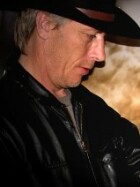
Jack Martin

David Whitehead

Nik (Ross) Morton

Chap O'Keefe
|
A BHW panel chews over the issue of the moment
THE RIGHTS AND WRONGS OF E-BOOKS
In
this collection of Black Horse Westerns you will find four exciting books
... If you enjoy tales of the Old West, tales of human courage on the frontier,
lawmen fighting against the odds to get their man, justice being dealt out
with the pull of a trigger, this collection is just what you need. The first
of many, Robert Hale has put together this action-packed ebook for western
fans.
– D. J. Segrue Ltd, publishers' sales and merchandising agency
FAST-SELLING Black Horse Western writer Gary Dobbs, aka Jack Martin, is a committed
advocate of ebooks as a medium for genre fiction. He is also a
tireless publicist for westerns.
He told Richard Prosch at the blog Meridian Bridge, "The fact that
nothing ever needs to be out of print is, as far as I’m concerned, a
big plus to digital publishing. It means that in theory everything
ever written can be easily available. I also think that genres such
as the western can reach a bigger audience as ebooks. I don’t really
think there is a downside to ebooks themselves, since traditional
books should be able to co-exist with this new technology. The ease
of self-publishing means that at the moment there is a lot of swill
about, and that could be seen as a downside, but quality will out
and in time the bad writing will simply vanish. So long live the
ebook."
Surprisingly, no set pattern emerged for the release of BHWs as
ebooks during the first seven months of 2011. In January, a
collection of four BHWs in one bargain bundle was placed on all
ebook platforms by intermediaries commissioned by publisher
Robert Hale Ltd. It was not until late July that Hale managing
director Gill Jackson was able to reveal, "Our ebook plans are
becoming more firm and I can tell you that we are publishing five
westerns in October and another ten in December. These are all
individual titles and we are issuing them at £3.99. Thereafter, I
hope to institute a regular issue of western ebooks, maybe on a
two-monthly basis."
[The October five are pictured below in the left column.]
Critics of the BHW bundle had pointed out that its best feature was
its ability to act as a sampler for new western readers, but with no
other ebooks available from the disparate authors represented, it
was not able to bear immediate fruit.
Meanwhile, other Hale western writers, past and present, have
displayed the initiative to step up and meet the ebook challenge
that can't be ignored. Among them are David Whitehead – a BHW author
from year one, 1986 – Terrell L. Bowers, Ed Gorman, (Chris) Scott
Wilson, Chuck Tyrell, Lance Howard, Mike Stotter, and Chap O'Keefe.
David has mounted an ambitious exercise to release his entire,
extensive backlist in Kindle editions, without the BHW branding
which would be unknown and superfluous to a majority of present
ebook purchasers. Chap has taken a more tentative approach and to
date released ebooks of just four of his western titles to which he has
procured or kept the rights. Both of them joined the following
debate, which is along the lines of earlier BHE "campfire pow-wows"
on topics of BHW interest.
The third participant was BHW writer Nik
(Ross) Morton, author of ebooks in other genres, and editor of the
Solstice Westerns series, issued primarily in the digital format.
|
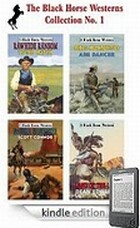
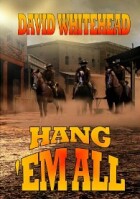
|
|
BHE: Thanks for answering the Extra's call, gentlemen. I'm sure
regular readers and writers will be hanging on your words about this
all-important topic! I think we see you smiling, Dave.
|
|

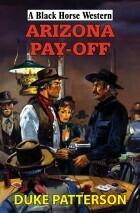
|
David: I have to confess that when the Kindle first made its appearance
I was one of those people who said it wasn’t for me, that it would
never replace that feeling of holding a "real" book in my hands,
etc, etc. Then I bought one and was converted to the cause within a
matter of seconds! The physical act of holding a Kindle, of reading
a clear font in a size that suits you perfectly, of thumbing a
button to turn the epage ... it quickly becomes as natural as
breathing.
That’s not to say I don’t miss real books. I do. The smell, the
size, the weight, the sound you make turning the page, the look of
the spines facing you on a shelf ... I do miss all those things, but
if I’m really honest about it, I don’t miss them as much as I
thought I would.
Nik: Compared to many, I joined the ebook revolution rather late. I
have a private library of over 4,000 printed books – many thousands
more were consigned to charity shops when we moved to Spain. I like
to see them on the shelves. And, let’s be honest, the majority of
titles aren’t on the bookshop shelves more than a couple of months,
so you need to buy when you find them. I know this attitude has been
negated somewhat by the remarkable availability of books on the
Internet. Yet I still like browsing bookshops of all kinds, hoping
to find that nugget I’ve been seeking for years, or coming across a
useful reference tome.
I started with a Kindle for PC on my desktop and soon realized I
needed the real thing for its portability. Serendipity knocked and
as I stepped down as chairman of a writers’ circle, the members
kindly clubbed together to buy me a Kindle.
As the editor-in-chief of [publishing company] Solstice, I’ve found
this Kindle invaluable. I can convert submitted MSS to PDF and load
them on my Kindle and read the submissions away from the computer
and email interruptions.
Chap: I've yet to buy a Kindle or any other reading device. But that
may be because I'm living in New Zealand. The country lacks its own
Amazon site and until a year ago Amazon didn't take orders from NZ
for the Kindle. Now, I believe I could buy one in US dollars and pay
another $20 for the shipping. I have quite a few titles on Kindle
for PC. So maybe I'm at the point Nik once was in my conversion. My
other thought is that I've boxes of real books in the house's
basement. I already can't find the time to re-read them, although I
would like to. But if the books I still really want, and new releases, were available as ebooks, it would
be a huge saving by eliminating shipping charges.
I've occasionally bought secondhand books for which the
shipping charge has been as much as the cost of the book. For new
books, the Book Depository has been a best bet for years. Not always
the best prices, but free delivery worldwide.
|
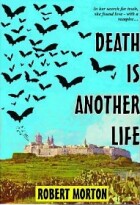
|
|
BHE: Before we wander off the subject, Chap, do we take it you, Dave and Nik are
broadly in favour of the ebook?
|
|

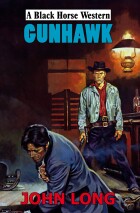

|
Chap: Oh yes, and as a writer for sure.
David: From a writer’s point of view, the ebook revolution has given
us a whole new market to exploit, at just the time we need it. We’re
told that reading is in decline. And yet ebook sales are now
regularly outstripping those of regular, print books. That can only
be to the good.
There’s also the question of cost. The cost of print books in recent
times – especially in these recent, financially difficult times –
has become increasingly prohibitive. Ebooks are, for the most part,
quite attractively priced.
And let us not forget that these ebook reading appliances are
compact and easy to carry – an extra plus for commuters or other
regular travellers who, frankly, don’t want to damage their books in
transit (I speak from experience).
BHE: Dave mentioned just then the newness of the market. As well as
a good side, doesn't this have a bad? Doesn't time have to be spent
on learning the new techniques?
Chap: Ah yes! Teaching the old dog new tricks. I went through that time and again in the newspaper industry as it adapted to changing
technology and work practices. Perhaps Dave should expand on this.
He has prepared many more ebooks than me.
David: Of course, it has meant learning a whole new set of skills
for those of us who have already dipped our toes in the water. At
first I found the idea of formatting for the Kindle daunting. You
would not believe what a voyage of discovery that was for me. But
with a little time and dedication, the necessary skills are quickly
acquired. Section breaks, page breaks and so on ... it’s not really
as difficult as some people make out.
Nik: Since January 2010, under three different pen-names, I've had
five books made available on Kindle and other ereaders: Assignment
Kilimanjaro, When the Flowers Are in Bloom,
Death Is Another Life, Spanish Eye and
A Sudden Vengeance Waits. The latter two are also now
available as paperbacks. Sales haven’t been great, but they’re out
there, and that’s something. I didn’t consciously decide to market
my MSS to ebook publishers, but the marketplace is so restrictive,
that’s often the only avenue open.
BHE: Except, of course, the newly respectable avenue of
self-publishing, where responsibility for the editing, formatting,
and cover production – plus their quality – is in the hands of the
author.
David: And frankly, it is vital that you produce the best-looking
product you can, because if an ebook customer buys a badly formatted
book, where the print is all over the place or riddled with scanning
or typographical errors, it doesn't encourage them to come back to
you in particular, or to the genre you represent.
BHE: Practice, as they say, does make perfect. The Ben Bridges,
David Whitehead, Carter West, and Doug Thorne ebooks all have
excellent, boldly titled covers, for instance.
David: I want a uniform look to my own books that readers can
readily identify. To an extent, I want to recreate the golden age of
the western paperbacks of the 1970s.... A lot of people knock
self-publishing, or vanity publishing as we used to call it. But one
of the things I especially enjoy about it is the freedom it gives me
as a writer. I have the final say on everything – especially the
cover art, which I feel particularly passionate about. I select and
buy the artwork I want – relatively speaking, it’s cheaper than you
might suppose – and design the covers myself.
|



|
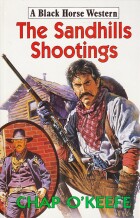
|
BHE: How about your covers, Chap?
Chap: Again, they're self-designed. I was choosing and preparing
covers back in the 1960s. In my late teens, I was writing and
editing – and doing every other broadly "editorial" chore – for
Micron Publications, a UK backstreet publisher of comic books and
magazines. But then it was literally cut-and-paste methods with the
artist's original, painted boards and products like Letraset for
titling. Too young to have heard of Letraset? Look it up on Wiki!
These days the principles might be the same, but the methods are
entirely different. Fortunately, one of my sons is usually on hand
to help out when I over-reach myself and get in a tangle on the
computer. I use Paint.NET image-editing software, though I consider
myself a novice in its intricacies.
I agree with Dave that a writer's books should have a uniform look.
Going off in a new direction every time would be a mistake. The die
for the Chap O'Keefe covers was cast when the two Black Horse Extra
paperbacks were put out a couple of years back, with Dave's
encouragement. The formula, if there is one, has been for a
combination of artwork and an old photograph where an appropriate
one is available.
Previously, I've favoured artists' illustrations
for covers on fiction, preferably commissioned for the book in
question from an artist prepared to read some of the story before
putting brush to board. But I recognize that publishers' need to
control expenses led first to often ill-matched "generic" art, then
on to photographs. Rather than buck this modern trend, I've tried a
bet each way. This worked very well, for instance, on The
Sandhills Shootings, where I was lucky to come across a
photo on Wiki of a Nebraska settler family. It was perfect to
represent the story's brave Swains.
I've also used again for my ebooks the sihouette logo I originally
designed in 1962 for the Micron Cowboy Adventure Library.
Twenty-four years later, Robert Hale Ltd came up with a remarkably
similar logo, but minus a rider, when they launched Black Horse
Westerns. Hale should be celebrating BHWs' Silver Jubilee this year.
I wonder if they have anything planned to note the milestone of
their consistently attractive, shiny hardcover books.
Nik: Of course, there’s nothing like holding your own printed book
in your hands. That’s a special feeling. Any of my ebooks that
haven’t been printed yet, I create and print a DVD cover and insert
it into an empty DVD case. This is then stowed on my bookshelf,
physical evidence of my book’s existence. When the book is printed,
I remove the DVD case from the shelf.
Chap: Neat idea, Nik!
BHE: Strictly speaking, Kindle ebooks come without covers. Are they
still important for something that doesn't have a physical presence?
What are the compensations in paying for a book that some would say
you never own?
Nik: Ebooks don’t suffer from broken spines, spilled liquid stains,
page discolouration and mould. They remain pristine – albeit with
either no cover or a black and white version. Still, that’s a plus:
no shelves to dust.
Ebooks are not demons, or replacements for books. They’re another
outlet for creative writing. As before, the reader needs to be aware
that not all books will live up to their promise in the blurb.
Chap: I'll answer only by saying cover images are definitely still
important. The great pity is that they are seldom displayed on
retail sites in much more than thumbnail size, and it's generally
the reader who has decided to download the book's text who bothers
to look at a larger version. By this time the cover's traditional
work – selling the book – has been done.
The best online
reproduction of The Sandhills Shootings cover is
probably the large version at the end of the online excerpt.
It can also be compared with the BHW and Magna Large Print covers
for the same novel.
But what do I know? I'm told the ebook superstars will spend big
money on good covers. And a good ebook cover is one that can do a
marketing job adequately while the subjects on it are no bigger than
ants when it's reproduced by the ebook sellers. I'm convinced, by
the way, that marketing and promotion of and by the author is as
important as writing quality for a successful ebook. Shame that,
since I've never been able to drum up enthusiasm for launching into
social networking and the likes of Twitter or even Facebook! Which
condemns me to nonentity, I guess.
BHE: Promotion ahead of quality – is that what we're saying here?
Nik: Because an ebook can be produced relatively fast – as compared
to the mainstream lead-time of eighteen months – there’s a
tendency to rush the work out. This undue haste should be mitigated
with quality control constraints.
David: Quality should still be paramount. The accessibility,
appearance and affordability of your product should be a high
priority for you.
We continue to face the same problems with promotion as we did for
real books. How do we get the message out to our readers? Many of us
have our own websites, and these can be useful promotional tools.
But there are other avenues to explore. Since we live in a digital
age, why not try your hand at making a promotional video to help
elevate the status of your product? Again, this means learning a new
set of skills. I have started working with Windows Live Movie Maker
and the results have been gratifying. Whether they translate into
sales remains to be seen.
|
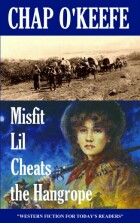
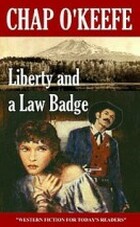


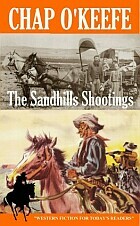
|

|
BHE: The trailer for The Wilde Boys was impressive,
Dave. We picked up on that at the benbridges website. Any
other good tips?
David: I can only speak for myself here, but the other way to
increase your profile is by sheer weight of numbers. I’m lucky in
that I have a large back catalogue of material. Reissuing all those
old and often hard-to-get books for this new market has been very
rewarding for me. I have never kept my old manuscripts, so I’ve had
to scan the books themselves into my computer to give myself a new
manuscript to work from. Reading these for press has been
illuminating and encouraging. Illuminating because, frankly, I had
no idea the books were as good as they actually are; encouraging
because the new manuscripts need the bare minimum of work to get
them ready for epublishing.
Chap: The earliest Chap O'Keefe book wasn't written until
1992, by which time I was using a PC for all my work, although Hale
insisted I supplied "hard copy" and even returned it. These paper
versions always came back right across the world from London with virtually no
editorial corrections. John Hale would write, "Because the novel is
so well presented I believe copy-editing would be a formality so we
will send the typescript straight to the setter." I eventually
persuaded the company to accept floppy disks, sent by airmail, and
to typeset from them. This system means I haven't had to scan any
old printed books to reproduce The Sandhills Shootings
and The Sheriff and the Widow as ebooks, but I have,
of course, had the same challenge as Dave mentioned earlier in
reformatting the files for the Kindle.
One problem, perhaps peculiar to me, is that I wrote the books using
Word Perfect software, and Amazon's Kindle Direct Publishing wants
Microsoft Word documents, HTML, or PDFs. I've never gone to the
expense of buying Word, but I do have Open Office from which I can
do "save as" of a file to produce an instant Word "doc" or a PDF.
This means first converting the old Word Perfect files to "odt"
files, putting in throughout the proper opening and closing
quotation marks, substituting real dashes instead of two hyphens
joined, and so on. Bit of a nuisance really, and it doesn't improve
the storytelling or writing style, but I believe it's increasingly
expected that this work should be done when preparing ebooks.
BHE: What fun and games! Any other obstacles?
Chap: None really, other than the time it all takes me, if not
others. But just as Dave has found, it can be reassuring to learn
that a book does read well. Coming back to a story after many, many
years, you can see it as a reader might, with a fresh eye. And I
haven't had any nasty shocks yet. What has amazed me is the amount
of historical and topographical detail put into a book like The
Sandhills Shootings, written before I had the ready
availability of the Internet for research. I've re-learned things
I'd forgotten I took the bother to find out. I gave the Extra a
couple of small examples which are being used in the Hoofprints
section. Now that is genuinely in the fun and games category!
Dave: But it’s not all fun and games. We have another serious
problem to overcome, and it has been caused by the very freedom that
allows us to issue our own books in this format. Epublishing has
opened up this exciting new market to everyone. And I mean no
criticism when I say that some people can write while others just
can’t. These well-intentioned, egotistical or downright misguided
amateurs may well spoil the game for everyone, albeit without
meaning to.
Nik: And, unlike most print publishers, ebook publishers will accept
novellas and even single short stories. In the old days, action and
adventure stories had a market in men’s and weekly magazines, but
that’s long since been closed. Indeed, several popular male writers
of the sixties and seventies started with magazine stories. Now,
epublishers may provide an outlet for that material. As long as the
standards don’t slip.
BHE: Some would say they already have slipped. The self-publishers
are a very big and busy crowd, rejoicing in the apparent removal of
what they call the "gatekeepers" of the "legacy" publishers. Any
comment?
David: Right now anyone can publish a book. There is absolutely NO
quality control. And this should always be uppermost in the minds of
the newcomer and the old hand.
Nik: That’s the downside of ebooks – the proliferation of
self-published books. There’s nothing wrong with getting a book
self-published, so long as it has been properly edited. Sadly, many
epublishers pay scant attention to editing. I know, even mainstream
publishers are guilty of howlers these days. A Clive Cussler
co-authored book mentions the Royal Army, presumably assuming that
since there’s a Royal Navy and a Royal Air Force, it must be right!
And that was in hardback, not ebook. Danielle Steel’s The
Ring has at least 35 typos, after which I stopped
counting. So sloppy editing isn’t just the province of ebook
publishers. Granted, some things always tend to slip through, no
matter how many edit passes you make. I’ve invented the editor’s
curse: readers spot the things you missed, but don’t notice all
that you do because it’s invisible.
As the saying goes, everybody has a book in them – but for the
majority that’s where it should stay. The ebook revolution has made
it too easy for dross to get published. It was bad enough with the
countless vanity publishers whose editing was generally abysmal, but
now it’s worse. I’ve reviewed a few vanity/assisted published books
in my time, and to be fair I believe that both Matador and, in
particular, Pen do serve their clients well.
Chap: What bothers me is, how does a newcomer to the western ever
come across the good ebooks on a huge list like Amazon's? The other
day I typed in a search for "fiction westerns" and was presented
with a list of more than 6,000. I scrolled through a half-dozen
pages and found no end of very old, public domain material and several
romances – in the contemporary, Harlequin/Mills & Boon vein – with
western settings. A few Louis L'Amours did pop up, but many readers
will have read these in their dozens of paperback printings over the
years. Why pay $5 for the ebook version?
Nik: The first time I ordered an ebook through my Kindle, I was
impressed. All non-UK orders have to go through ".com" and not
".co.uk". What I like is that once I've read any ebook I order from
Amazon.com, I can remove it from my device and it resides in the
archive at Amazon. I can call it back to my Kindle at any time. I’m
not impressed with the fact that 99c books bought through Amazon end
up costing a lot more [in Spain] – about $3.40 due to taxes – though
the read is usually still a bargain.
BHE: Nonetheless, Kindle Direct Publishing virtually admit a listing
with them does not sell a western, or any other book. Their line
goes, "Thanks again for publishing your work on Kindle, and we wish
you the best of luck in promoting and selling your work."
Chap: Which proves we still need sites like Black Horse Extra and Dave's Ben Bridges, and a
host of busy bloggers, to spread the word about westerns ... which
today includes ebooks. The western mustn't remain an orphan genre
in the book industry's collective mind.
Nik: Not surprisingly, one type of ebook has undergone a remarkable
surge in popularity – the erotic novel. Where somebody might have
baulked at reading an erotic paperback in public, they have no
inhibition about reading one on an electronic device. Brown wrapping
paper has probably seen a drop in sales.
And in this information age it’s quite likely people who wouldn’t
dream of reading a print book – I read a book once, why read
another? – might be drawn to ebooks because they’re onscreen and
digital. In the old days, you had your purchasers of hardbacks and
of paperbacks, often separate individuals; now you can add to the
mix purchasers of ebooks.
|


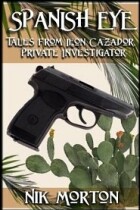
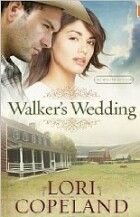
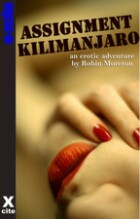
|
|
BHE: In brief, can we sum up that no doubt exists among you that
authors and publishers need to come to grips with a new order, or
fall by the wayside?
Chap: Too right. Hasn't that always been the way? The difference
this time is the change is major. If minors like us refuse to
adapt, they'll likely fail. So, too, might the publishing houses
whose managements and staff don't retrain quickly, stake out a claim
in the new territory, or refuse to accommodate their best assets'
requests for square deals.
By a square deal, I mean an author should get more than 25% of
what's left of an ebook's price after the deduction of maybe a 20% sales
tax, a 50% cut to a retailer, and a 20% cut to a formatting agency. What
work is the publisher doing for his 75% of the remaining net cash proceeds?
Editing and a cover have probably been provided earlier for a print book,
and if their worth really is three times the author's contribution, perhaps
the publisher needs to look at attracting or keeping better writers.
According to what I hear, one ebook on the market for most of this
year has produced no income for its authors.
The word was, "Nothing yet (if ever) coming up in the way of
'rewards' from their pitiful attempt at entering the ebook racket."
Clearly, the author I quote was no convert to digital publishing!
Nik: Where once I didn’t see the relevance of ebooks, now I can
accept them as yet another method of reaching readers. Their future
looks interesting – and probably bright.
David: If we are to encourage this market to grow, and in the
process see a resurgence of interest in the western and earn
something extra from our labours, we must all always endeavour to
make paramount the quality of our writing, and the presentation and
affordability of our books.
|

|
|
|
|

|
Misfit Lil catches the eye of a pulp connoisseur
SERENADE FOR MISS GOODNIGHT
The Black Horse Western series has frequently been touted
as being in the grand tradition of pulp fiction. One of the most enthusiastic
and constructive supporters of that branch of fiction, much of which
only now is being elevated in the public mind to a serious place in American
literature, is CULLEN GALLAGHER.
Cullen is a Brooklyn-based writer whose work has appeared, among
other places, in
the Los Angeles Review of Books, Beat to a Pulp, Crimefactory, Film
Comment, The L Magazine, Bright
Lights Film Journal, The Brooklyn Rail, Fandor, Not Coming to a
Theater
Near You, Hammer to Nail, Moving Image Source, and Spinetingler.
He also has a blog called Pulp Serenade, which as the title implies,
lauds the attractions of popular US fiction of yesteryear – not
just the pulp magazines of the first half of last century, but
groundbreaking paperback series, too. We especially enjoyed his
recent series of posts about the Gold Medal series, in which he
reviewed some truly unforgettable noir and western novels and filled
in many of the gaps in our knowledge about the people who wrote
them.
In August, Cullen posted a review at Pulp Serenade of Chap O'Keefe's
Misfit Lil Cheats the Hangrope. The author said, "That book has
received a very fair share of reviews, from top bloggers to eminent
authors, but I don't think anyone has done anything more thoughtful
or carefully crafted than Cullen." For those BHE followers who
didn't see it, we're proud to rerun the review here.
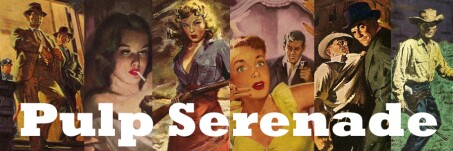
ANYONE who ever said the Wild West was no place for a lady clearly
never met Misfit Lil! Radiating with pluck and fortitude, she’s got
a winning personality that can charm even the gruffest hardcases,
the brains to outsmart the most cunning villains, and the
perseverance to conquer any and all of the West’s many challenges.
The series character has thus far appeared in seven books by author
Chap O’Keefe, the most recent of which is Misfit Lil Cheats the Hangrope. Originally
published in 2009 as a Black
Horse Extra paperback, it is now available as an ebook.
Readers looking for an innovative and instantly likeable main
character and a rousing Western adventure will find much to enjoy in
O’Keefe’s book.
Lil’s latest adventure begins as a wagon train crosses her father’s
range. A snowstorm is imminent, and Misfit Lil decides to come to
their rescue. Her good intentions, however, get in the way of the
wagon train’s guide, Luke Reiner, whose ego prevents him from taking
a young woman’s sage advice.
After the storm blows over, the wagon
train’s captain, Winton Petrie, decides that Reiner needs some help
in this rough country. So, he hires Lil’s reluctant paramour,
Jackson Farraday, to complete their journey. Trouble is never too
far from the trail, and after a tragic murder, everyone’s suspicions
turn to the newcomer Jackson. Lil, however, has her own suspicions
as to who is behind everything, and it is up to her to save the
day…if she can get back to the wagon train alive.
O’Keefe has built a lot of suspense, action, adventure into Misfit Lil Cheats the Hangrope,
but some of the most enjoyable moments are actually the quieter
ones. Quieter, meaning there’s no gunfire, but they’re plenty loud
with laughter.
Along the journey, Lil befriends two young girls,
Honesty Petrie and Prudence Hannigan, a preacher’s daughter. Even
though Lil was educated in the East, no book learning could erase
her Western wiles, and her interactions with the more strait-laced
Honesty and Prudence make for some very funny moments. The two wagon
train daughters are charmed by Lil’s experience, and they form a
fast bond. Whether they are taking a sip of whiskey or bathing in a
stream, the interactions of the girls are very human and relatable.
Such tender “coming of age” moments are integrated smoothly into the
story, and add both heart and humor to the action-packed narrative.
Misfit Lil isn’t just a strong character, but a strongly written
one, too. Chap O’Keefe hits the right balance of spirit and
vulnerability, power and weakness, and humor and seriousness. As the
book explains, “In Lil’s estimation a girl had a full share of
responsibilities no less than a man, in this or any country.”
In a
genre that is rife with male heroes, it’s a pleasure to read about a
female hero for a change. I look forward to going back to the
beginning of the series and catching up with all of Lil’s
adventures.
|

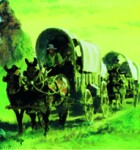
|
|
|
|

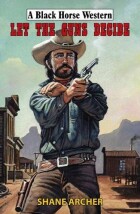

|
NEW
BLACK HORSE
WESTERN NOVELS
Published by Robert Hale Ltd in August, September and October
978
In Need of Hanging
|
Billy Hall
|
0 7090 9173 8 |
Colorado Clean-up
|
Corba Sunman
|
0
7090 9179 0
|
Range War Hell
|
Ryan Bodie
|
0
7090 9222 3
|
Kato's Army
|
D. M. Harrison
|
0
7090 9192 9
|
The Prairie Man
|
I. J. Parnham
|
0 7090 9187 5
|
Battle at Gun Barrel Canyon
|
Wolf Lundgren
|
0 7090 9186 8
|
The Mark of Trask
|
Michael D. George
|
0 7090 9210 0
|
Ryan's Legacy
|
Bill Williams
|
0
7090 9214 8
|
The Way Station
|
Owen G. Irons
|
0
7090 9084 7
|
The Killing Time
|
Logan Winters
|
0
7090 9183 7
|
Comanchero Trail
|
Jack Dakota
|
0
7090 9203 2
|
The Last Mann
|
Hank J. Kirby
|
0
7090 9215 5
|
Siege at Hope Wells
|
Scott Connor
|
0
7090 9213 1
|
Ghost Ranch
|
C. J. Sommers
|
0
7090 9217 9
|
Three Trails
|
Abe Dancer
|
0 7090 9221 6
|
Encounter at Salvation Creek
|
Paxton Johns
|
0
7090 9220 9
|
Let the Guns Decide
|
Shane Archer
|
0
7090 9184 4
|
Fort Revenge
|
Ralph Hayes
|
0
7090 9226 1
|
Payback at Valley Forge
|
Emmett Stone
|
0
7090 9231 5
|
Ghosts of Bluewater Creek
|
Terry James
|
0
7090 9240 7
|
The Hired Ace
|
Clay Starmer
|
0
7090 9243 8
|
Cut-Price Lawman
|
Tyler Hatch
|
0 7090 9248 3
|
The Shadow of Iron Eyes
|
Rory Black
|
0 7090 9247 6
|
Captain Talbot's Reckoning
|
A. Dorman Leishman
|
0 7090 9254 4
|
|

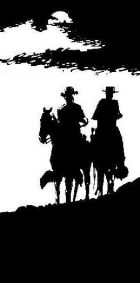
|

|
Black
Horse Westerns can be requested at public libraries or ordered at bookstores. They can be bought online from the publisher at www.halebooks.com,
or from other retailers including Amazon, Amazon UK, WH Smith, Blackwells
and The Book Depository ("free delivery worldwide").
From October, selected backlist titles will be republished as ebooks, available
in most formats from online retailers. The first titles are: Arizona Pay-Off, Gunhawk, Dead Man's Range, A Colt for the Kid, and The Kansas Fast Gun. The books' covers are displayed alongside our feature article, The Rights and Wrongs of Ebooks.
|
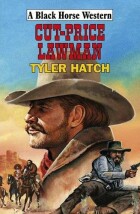
|
|
AND AS BLACK HORSE EXTRA E-BOOKS:
|
|
|

THE SANDHILLS SHOOTING is one of Chap O'Keefe's early novels and the second
to feature range detective/hired gun Joshua Dillard. In this one, Dillard
gets a letter from his brother-in-law, who is serving as a deputy marshal
in a small town in Nebraska, asking him to come and help prevent a range
war that's brewing in the sandhills area of that state. At the same time,
Dillard is summoned to Omaha by a wealthy businessman who also has connections
in the sandhills. Naturally, those two cases turn out to be related, but
Dillard doesn't discover that until there are several attempts on his life,
in one of which he's shot and left for dead.
Chap O'Keefe takes a traditional Western plot and as usual spins it into
something more with clever plot twists, well-developed and interesting characters,
and plenty of tough, hardboiled action scenes. Joshua Dillard has turned
into one of my favorite Western characters. Although he's fast with a gun
and can handle himself just fine in a fistfight, he's hardly a superman,
but rather a flawed but determined man trying to make his way on a brutal
frontier.
THE SANDHILLS SHOOTING is now available in an affordable ebook edition. If you're a Western fan, I highly recommend it.
– James Reasoner, at the pulp fiction blog Rough Edges
Read an excerpt here
$2.99 at amazon.com
£2.10 at amazon.co.uk
|
|
|

99c
amazon.com
86p
amazon.co.uk
"You could as well have been watching a movie as
reading a book. . . O'Keefe writes westerns with the
coolness of a hired gun."
– New Zealand Herald
"There's
nothing about this I didn't enjoy ... I have two O'Keefe novels on
the way and this has whetted my appetite for them.... I'm loving this western.
I was travelling today and The Sheriff and the Widow was my book for the trip."
– David Cranmer,
of Beat To a Pulp
"The Sheriff and the Widow is available now at a great, giveaway price, so how can you not afford to add this to your collection?"
–Western Fiction Review
Read an excerpt here
|

$2.99
amazon.com
£2.10
amazon..co.uk
"This book is a lot of fun, pulpish but with a sharp, contemporary edge. The dark, complex plot, the emotional angst, and the
gritty storytelling remind me very much of many westerns published in the
fifties by Gold Medal, by authors such as Lewis B. Patten, Dean Owen and
William Heuman. The pace is very fast,
the action scenes are handled well, and Joshua Dillard is a very likable
hero, tough and competent enough to handle just about any situation, despite
his occasional self-doubts, but not a superman by any means. I’m ready to
read more about him right now.... If you’re a fan of hardboiled action westerns,
I definitely think you’ll enjoy it."
– James Reasoner
|
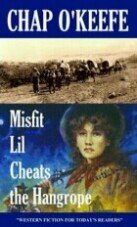
$2.99
amazon.com
£2.10
amazon.co.uk
"Take it from someone who has collected and read westerns for more than 40 years, Misfit Lil Cheats the Hangrope
stands head and shoulders above the current crop of competitors! It has a
fabulous story with – to this reader, at least – a completely unforeseen
dénouement, vivid, lively characters and regular bursts of action
which ... aren't just shoehorned in to beef things up a bit. I have read
Chap O'Keefe for a long while now, but genuinely feel that this is his best
to date!"
– David Whitehead,
aka Ben Bridges
"Read it earlier this week and it's terrific."
Cullen Gallagher,
of Pulp Serenade
|
|
|
|
|
|
|